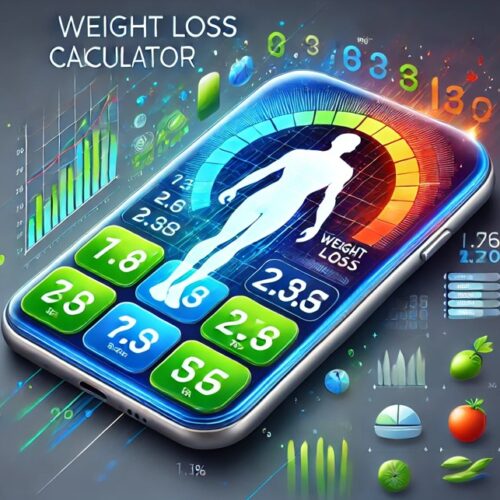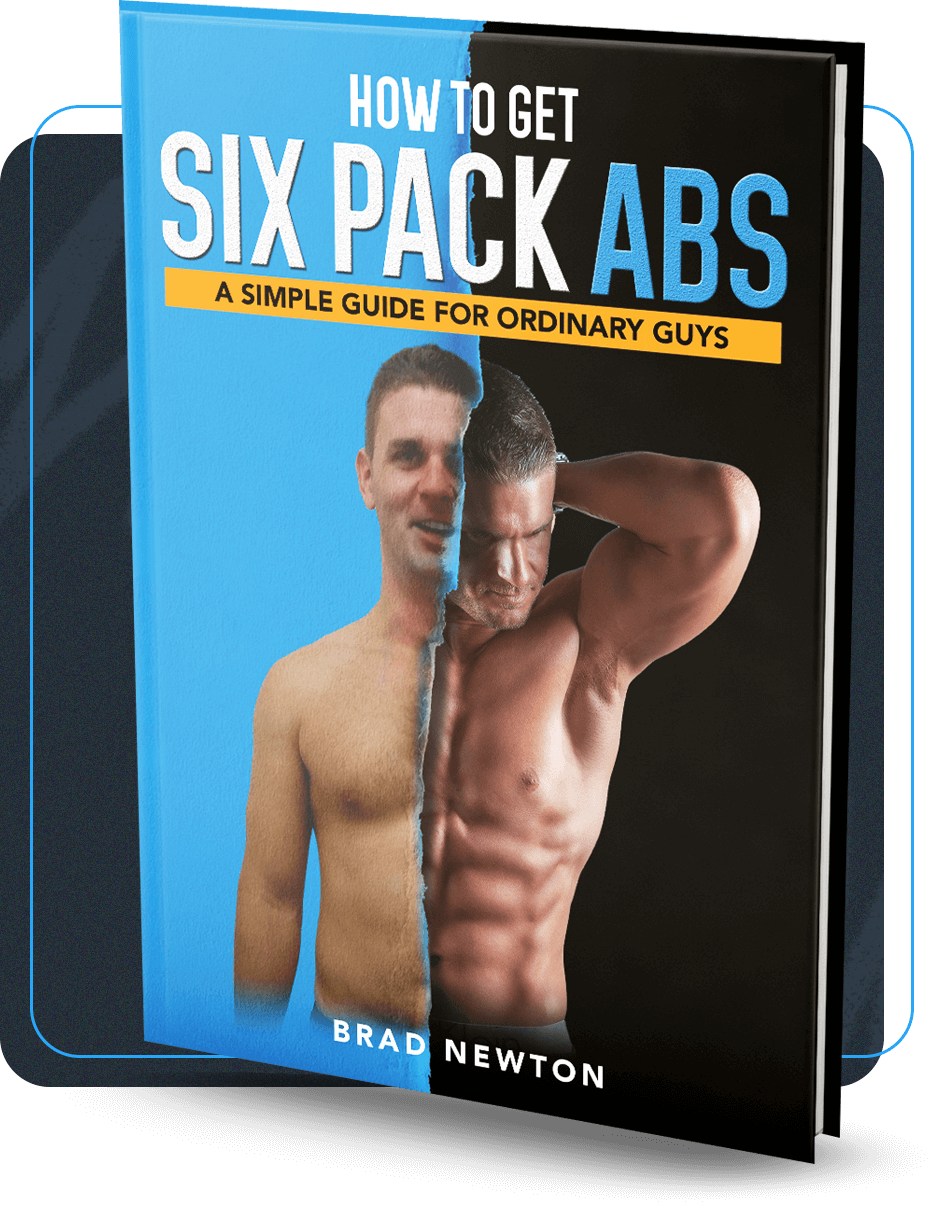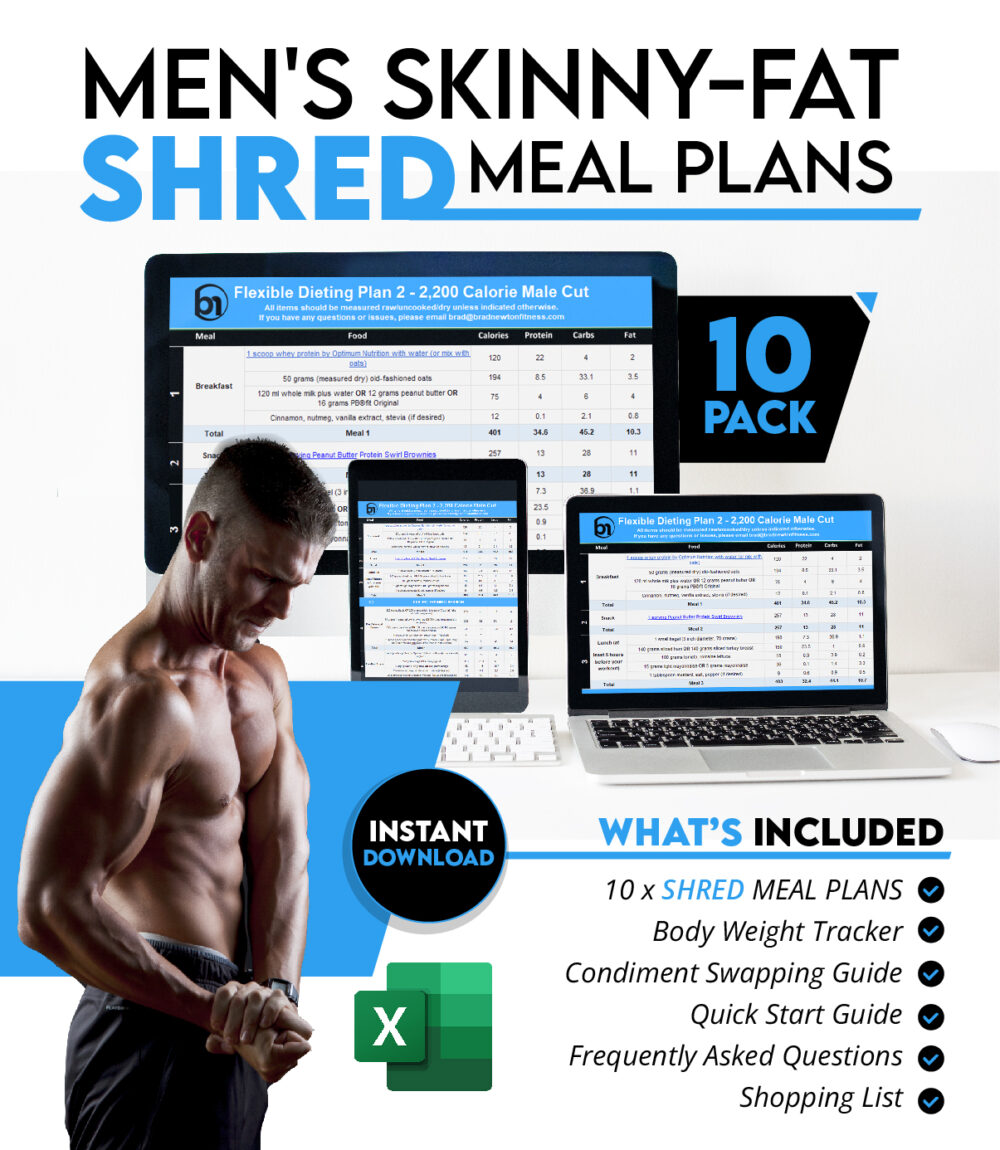Try my free macro calculator to determine the exact daily macronutrient intake you need to either lean bulk or shred. Simply input your gender, height, current weight, age, and activity level, and let my macronutrient calculator provide your personalised macro ratios in seconds.
Below was the free macro calculator I used to transform my skinny-fat physique, starting with a shred phase then a lean bulk phase. To learn more about my skinny-fat transformation by lean bulking and cutting, watch this video.
Related: Struggling with being skinny-fat? The Push Pull Legs: Ultimate Beginner Guide book is your ultimate solution—get the 4-week plan, expert tips, and proven strategies to build muscle and finally achieve a lean, strong physique. Grab your copy here!
Free Macro Calculator
What Are Macronutrients (“Macros”)?
Macronutrients, or “macros,” are the nutrients your body needs in large amounts to thrive. The three main macros are carbohydrates, protein, and fat—each playing a unique role in fuelling your body and body composition.
Carbohydrates
Carbs are your body’s go-to energy source, broken down into glucose to power your brain, nervous system, and red blood cells.
There are three types of carbs: sugar, starch, and fibre. While sugar and starch provide quick energy, fibre supports digestion and keeps you feeling full.
Each gram of carbs delivers 4 calories, and you’ll find them in foods like vegetables, fruits, grains, tubers, and cereals. My personal favourite carbs are black rice, sweet potato, and oatmeal 🙂
Protein
Protein is all about building and repairing. It provides essential amino acids your body needs for maintaining and creating new cells.
Like carbs, protein also provides 4 calories per gram. You can load up on protein from lean meats, fish, eggs, cheese, Greek yoghurt, and plant-based sources like pulses. My favourite sources of protein are lean chicken breast, turkey breast, and whey protein powder.
Fat
Dietary fat might be calorie-dense, but it’s vital for immune function, cell structure, and hormones. It’s also the most energy-packed macro, offering 9 calories per gram.
You’ll find healthy fats in foods like oils, nuts, seeds, fatty fish, and high-fat dairy.
Basic Steps for Macro Counting
- Enter your details into the calculator.
Start by inputting your gender, current weight, height, and age. - Select your current or intended activity level.
For example, if you plan to do two weightlifting sessions and one cardio session each week, choose the option that matches “1 to 3 hours of exercise per week.” - Choose the BMR formula.
If you don’t know your body fat percentage, I recommend using the Mifflin-St Jeor formula—it’s reliable and straightforward. - Set your goal.
From the drop-down menu, select either “weight loss” or “weight gain.” For fat loss, I suggest starting with a moderate calorie deficit aimed at losing around 1 pound per week. - Log your calorie and macro targets into MyFitnessPal or MyNetDiary.
If the calculator suggests a target of 1,818 kcal/day, don’t stress about being overly precise. Create a range (e.g., 1,800–1,900 kcal/day) to keep things manageable and avoid burnout. - Weigh, measure, and track your food.
Invest in measuring cups and spoons to portion your meals accurately. Weigh all your food before eating—it’s a non-negotiable for ensuring your macro tracking is on point. Personally, I used a digital food scale like this one here. - Monitor your progress.
Weigh yourself every morning (before eating or drinking) and track your average weekly weight change. For moderate weight loss, aim to drop about 1 pound per week. If your weight isn’t changing as expected, review your tracking habits—it’s often an issue of overlooked calories or portion sizes. Download my tracking software (for free) which I use with my online coaching clients to ensure they are shredding (or lean bulking) at the correct rate.
By sticking to these steps, you’ll have everything you need to hit your macro goals and crush your fitness targets.
Pro Tip: To make it less intimidating, spend the first 4-6 weeks trying to hit your calorie target range and protein target. After 6 weeks, then focus on your carb and fat targets.
Why Should I Track Macros?
Tracking your macros can be a game-changer for achieving your fitness goals. While calorie counting helps you manage your weight, tracking macros ensures you’re fuelling your body with the right balance of nutrients to optimise health, performance, and body composition.
For instance, many people on weight-loss diets unknowingly undereat protein, which can lead to muscle loss and a “skinny-fat” appearance rather than the lean, defined physique they want. And trust me, I know all about the skinny-fat physique! If you are interested, watch my skinny-fat transformation story here where I show you how I calculated my macros to shred fat and build muscle.
Similarly, severely restricting dietary fat might make it easier to cut calories, but it can negatively impact hormone balance, brain function, and overall health.
By tracking macros, you create a personalised meal plan tailored to your goals, ensuring you eat enough protein to maintain or build muscle, healthy fats to support your body’s essential functions, and carbs to fuel your workouts and recovery. This approach moves beyond the “eat less, move more” mentality and focuses on maximising what your body needs.
Macro tracking also supports flexible dieting, meaning no food is off-limits. You can enjoy the occasional treat while sticking to your goals, which makes it far more sustainable than restrictive diets.
However, it’s important to recognise that macro tracking isn’t for everyone. Beginners may find the process of calculating and weighing food overwhelming, and it can sometimes encourage an overly analytical mindset around eating. If this sounds like you, a less rigid approach—like focusing on portion sizes or simply eating more protein-rich foods—might be a better fit initially.
That said, for those ready to commit, the benefits of tracking macros—including better health, improved body composition, and the freedom to enjoy a variety of foods—make it one of the most effective tools for long-term success.
Related: Struggling with being skinny-fat? The Push Pull Legs: Ultimate Beginner Guide book is your ultimate solution—get the 4-week plan, expert tips, and proven strategies to build muscle and finally achieve a lean, strong physique. Grab your copy here!
How to Calculate & Count Macros in Your Food
Tracking macros can feel daunting at first, but with the right approach, it’s straightforward. The key is to ensure accuracy in your calculations to make macro tracking as effective as possible.
Step 1: Use food labels for packaged items.
If your food comes in packaging, start with the nutritional information on the label. These details give you the calorie and macro breakdown per serving, so it’s easy to log into your tracking app. I use MyNetDiary to scan the barcodes of the packages and then enter in the serving size. Easy 😊
Step 2: Cook most of your meals at home with minimally processed foods.
Home cooking not only gives you full control over what goes into your meals but also simplifies macro tracking. For non-packaged items like fresh produce or raw meat, use reliable resources like:
- CalorieKing
- MyFitnessPal or MyNetDiary food database
- SELF Nutrition Data
- The UK Food Standards Agency Database
Search for the food item in these databases. If the exact brand or product is listed, use it. If not, opt for the “average for all brands” entry. For bulk or unbranded items, cross-check a few sources to find a reasonable middle ground.
Step 3: Weigh your food for accuracy.
Using a food scale is non-negotiable for precise tracking. Always weigh food before cooking to capture its raw weight, as cooking changes its weight due to water loss.
For example, if you’re prepping a pound (454 grams) of chicken for four meals, weigh it raw first. After cooking, divide it into four equal portions based on the cooked weight—keeping in mind that it will weigh less once cooked.
For foods that don’t require cooking, weigh them directly before eating.
Step 4: Avoid measuring by volume.
Measuring cups and spoons might seem convenient, but they can be wildly inaccurate. A heaped tablespoon of peanut butter, for instance, might look close to a level tablespoon but could contain 50–100 extra calories—enough to throw off your entire day’s calculations. Stick to weighing food in grams or ounces for consistency. If you insist on measuring peanut butter with a teaspoon or tablespoon (I do this!), then you must ensure it’s level… not heaped.
Step 5: Log everything you eat.
Include every ingredient, no matter how small, in your macro tracking. That means counting vegetables, fruits, condiments, oils, and even the tiniest drizzle of butter. Those “forgotten” calories can add up quickly and sabotage your results.
I always log everything I consume, even small items like a teaspoon of sugar in my coffee (16 calories, logged in MyNetDiary). When cooking, I measure ingredients like olive oil using a teaspoon or tablespoon before adding it to a salad or frying pan. It’s the seemingly harmless extras—like cubes of feta cheese, pats of butter, or that innocent handful of almonds—that often sneak in hidden calories. These are the culprits that can stall progress for many of my online fitness clients, leaving them wondering why their weekly weight average isn’t shifting.
PRO Tip: Accuracy matters, but don’t let it paralyse you. Macro tracking is about consistency, not perfection. Over time, you’ll get better at estimating portion sizes and learning what works for your goals. By focusing on whole, nutrient-dense foods and weighing them accurately, you’ll be well on your way to mastering macro tracking and achieving the results you’re after.
How to Calculate Macros Per Meal
There’s no right or wrong answer to precisely how many calories or macros you should be eating for each meal or snack. If you prefer to skip breakfast. No problems. If you prefer to have 5 snacks throughout the day and a large dinner, that’s okay too.
All you need to do is take your daily calorie and macro nutrient targets and divide them out across the desired number of meals and snacks per day. Personally, I prefer to have 2 meals per day and snacks in between. I also aim to get 30-40 grams of protein in each meal and snack—this will make hitting your protein target much easier (trust me!)
If you’d rather use a ‘meal plan’ approach, then check out my free meal plans for bulking and shredding. These will give you some inspiration for how to split your calorie and macro targets across the day.
Frequently Asked Questions
What are macros, and why should I track them?
Macros, or macronutrients, are the primary nutrients your body requires in substantial amounts: proteins, carbohydrates, and fats. Tracking them helps ensure you’re consuming the right balance to meet your health and fitness objectives, such as weight loss, muscle gain, or maintenance. By monitoring your macros, you can make informed dietary choices that align with your goals.
As you may know, I was a skinny-fat guy that struggled to get shredded and build mass. When I calculated my calorie target for shredding and bulking using the free macro calculator above, along with my macros, I completely transformed my body. Watch my story here.
What are the ideal macros for fat loss?
If you’re aiming to lose fat, here’s a simple guideline to get your macros on point:
- Protein: Aim for 1–1.2 grams of protein per pound of body weight each day. If you’re very overweight, 0.6–0.8 grams per pound will do the trick. This usually accounts for around 30–40% of your daily calories.
- Carbohydrates: Set your carbs at 30–50% of daily calories, which translates to roughly 0.75–2 grams of carbs per pound of body weight for most people.
- Fats: Keep fats at 20–30% of daily calories, or about 0.2–0.4 grams per pound of body weight.
To make life easier, use the free macro calculator above. Just enter your gender, current weight, height, age, and activity level, and let the calculator handle the math for you. It’ll provide personalised macro targets tailored to your goals.
What macros are needed for muscle gain?
If your goal is to build lean muscle while keeping fat gain to a minimum, here’s how to set your macros:
- Protein: Aim for 0.8–1 gram of protein per pound of body weight daily.
- Carbohydrates: Set your carbs at 30–50% of daily calories, which works out to about 0.75–2 grams of carbs per pound of body weight for most people.
- Fats: Keep fats at 20–30% of daily calories, or around 0.2–0.4 grams per pound of body weight.
For personalised macro targets, use the free macro calculator above. Enter your gender, current weight, height, age, and activity level, and it’ll calculate your exact numbers for you—taking the guesswork out of muscle building!
What's the best way to track my macros?
Utilising a nutrition app like MyFitnessPal, MyNetDiary, or Cronometer can make tracking your macros straightforward. These apps allow you to log your food intake, monitor your macro consumption, and adjust as needed to stay aligned with your goals. Personally, I use MyNetDiary 😊
How do I measure portion sizes accurately?
Investing in a digital food scale is crucial for precise measurement of your food portions. Weighing your food ensures you’re consuming the correct amounts of each macro, helping you adhere to your nutrition plan effectively.
Can I eat out or enjoy treats while tracking macros?
This is one of the most common questions I receive from my online coaching clients. Yes, you can! Macro tracking supports a flexible dieting approach, allowing you to enjoy a variety of foods, including occasional treats, as long as they fit within your daily macro targets. This flexibility makes it easier to maintain your nutrition plan over the long term.
If you enjoy red wine, beer, or other spirits, you can track this inside MyNetDiary. If you want Häagen-Dazs then you can find an entry for it inside popular tracking apps and track it!
By understanding and tracking your macros, you can tailor your nutrition to support your fitness journey, making informed choices that align with your goals.




















